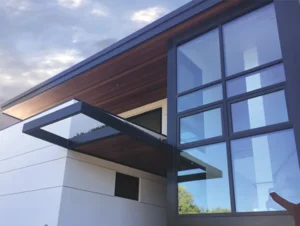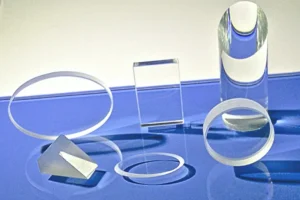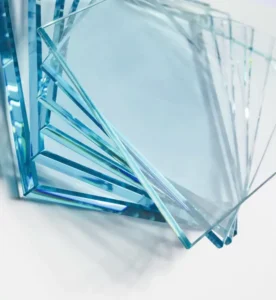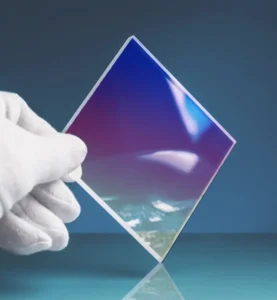You might have heard about UV light. It comes from the sun and reaches the ground. Guess what? It is potentially toxic to human skin and can cause skin cancers.
Fortunately, the ozone layer absorbs the harmful UV light. Besides the toxicity, UV light can create impactful applications in saving humans from dangerous microorganisms. Therefore, they are being used in the labs to disinfect the products.
Today, we will explore the best types of glass that can survive UV light and provide a direct way to handle our various applications. Let’s discuss them in detail.
What is UV light? Types of UV light

UV light is the electromagnetic radiation that falls between 180-400 nanometers. Such a wavelength range is invisible to the human eye. Only a few animals with specialized eyes can view such light.
UV light is quite impactful in creating an excellent response when directed toward the microorganisms and sterilization process.
But before that, you must understand the three fundamental types of UV lights that bring wonders to the system.
UV-A (Long-Wave UV Light)
It has the upper limit of the UV light wavelength. For example, the UV-A falls in the 315-400 nanometers wavelength. It is the least harmful and most significant part, sharing up to 95% of the UV light that reaches the earth.
Its potent effects include:
- Tanning and damage to the skin if exposed for long-term periods.
- It can cause aging and wrinkling of the skin.
- Its applications include tanning beds, UV nail dryers, forensics, and authentication.
UV-B(Medium-Wave UV light)
It has a wavelength less than the UV-A but is more harmful than the UV-A. The good news is that the ozone layer absorbs most of its portion, leading to only a limited portion reaching the earth’s surface.
Its effects include:
- It causes skin burns and can hurt your skin if exposed for the long term.
- It can stimulate Vitamin D production as well.
- Top applications include sterilization and disinfection of various surgical and medical tools.
UV-C(Short-Wave UV light)
UV-C is one of the most toxic and dangerous UV light forms that, fortunately, does not reach the earth. The excellent aspect is its killing power, which makes it suitable for sterilization and disinfecting materials.
Its effects include:
- It is hazardous to the human skin, causing cancers and instant skin burns.
- UV-C is a good part of sterilization as it blocks the replication of DNA and RNA of various microorganisms.
Best glass for UV light applications
Are you looking for UV-blocking glass? However, UV transmission glass is as substantial as UV-blocking glass.
Let’s discuss all the crucial glass types in UV light blocking and transmittance.
Quartz Glass

Quartz Glass is quite famous for its UV-light transmission. Its next-level transparency allows the UV-A, B, and, to some extent, UV-C lights to pass through it. Therefore, it is differentiated from regular glass materials.
You can experience the following best features.
- Whether you increase the temperature and apply, quartz Glass is resistant to high heat applications.
- It doesn’t even get damaged by chemical applications.
- Scientific instruments, UV sterilizers, and specialized optical lenses deploy the quartz Glass for various uses.
Borosilicate Glass

Another glass type that is good for UV transmission is borosilicate glass. It lets UV-A and B lights pass through glass while blocking most UV-C lights. So, it is a more protected form of glass that is used in various industries.
It features:
- Resistant to thermal applications even at the higher temperature ranges.
- The corrosion has no more influence as it is a good corrosion resistant.
- It finds suitable applications in laboratory glassware, light covers, and certain UV lamps.
Soda-Lime Glass

Soda-lime glass is more UV-blocking. It allows UV-A radiation while blocking UV-B and C rays. Therefore, it is more suitable for UV-blocking applications than the opposite ones.
Features are:
- Soda-lime glass is famous and widely available at affordable prices.
- It blocks the UV-B and C lights, elevating human protection.
- This glass is helpful in applications like windows and protective enclosures.
Coated Glass

If you want to protect yourself from the UV light, rely on the coated glass. This glass type blocks 99% of the UV light. The manufacturing process is straightforward: laminating regular glass and preventing the passage of UV light.
Such a glass type comes with the following features.
- Coated glass blocks the UV light without blocking the visible light. So, it is optimal for various applications.
- It can protect items in museum displays, automotive windows, and architectural applications.
- Any material at risk of fading can harness the coated glass and block the UV light.
Applications of UV-optimized Glass
If you are thinking of UV-optimized Glass, consider its pros and cons. Use it safely in the following applications.
- UV sterilization
UV light is equally toxic to the human skin and microorganisms. It blocks their DNA replication and kills them instantly. Therefore, consumers can shower the UV light on the various equipment to sterilize them.
- UV photography and optics
UV imaging has emerged as a powerful tool. Quartz and borosilicate glass can be powerful tools in UV photography.
- Scientific Equipment
In laboratories, UV light can sterilize scientific equipment, such as photometers and spectrophotometers. Quartz Glass is commonly used in such laboratories and helps in various applications.
Conclusion
Choosing the quality glass types is quite crucial. It helps better handle the UV rays and harness its potential benefits in laboratories and other applications.
But do you have the quality suppliers?
If not, relax! Shenxun Glass Manufacturers can be your stop. Our customized facilities can provide you with tailored features for your glass materials. Plus, they offer the best adherence to the UV glass. Explore a wide range of collections now!
